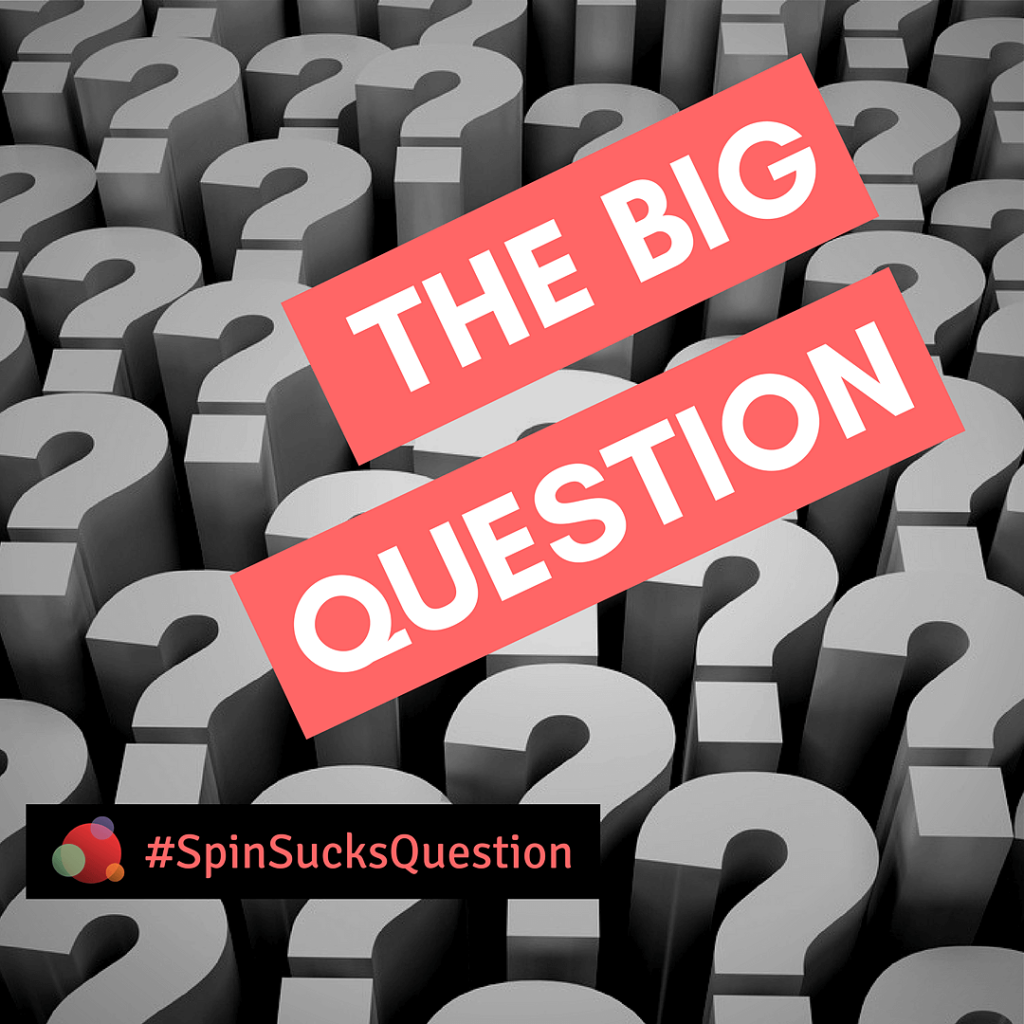 Note-taking is a skill.
Note-taking is a skill.
Solid note-taking got us through school, and it’s a constant reality in professional life, especially in communications.
But the way we take notes, and the tools we use, have changed.
A lot.
There are countless note-taking apps available on our computers and smartphones.
Evernote, Microsoft OneNote, Apple Notes, and Google Keep are just a handful at the top of the list.
Despite the advancement in digital note-taking tools, traditional note-taking is also alive and well.
It’s simple, totally accessible, and there are never compatibility issues.
Which brings us to this week’s The Big Question:
What are your preferred tools for note-taking?
All About Evernote
We received a lot of responses on this one.
Everyone has their own style. But Evernote seems to be on a lot of lists.
David Alexander is all about Evernote:
It has to be Evernote… in the Cloud, easy to transfer to other formats, secure, and file-able so you can put things in different folders.
And it’s a scrapbook for great articles and documents, too!
Tatiana Beale agrees:
I love Evernote, it’s so convenient and easily searchable; especially considering you can access it on mobile, so you’re never without a place to jot down new ideas.
And I can’t live without my Moleskine where I continue to take notes using pen and paper…I’ll never be able to go completely digital on this one!
Barbara Weaver Smith has become an Evernote Ninja:
Evernote. I forward critical emails to Evernote.
We scan documents, receipts, and photos into Evernote.
I take notes by hand in Black n’ Red spiral notebooks, but for clients and projects I take an Evernote picture and file them.
I recently took Charles Byrd’s Evernote course—fantastic. He taught many new tricks to become much more productive!
Julia Carcamo and Lisa Kidder both love Evernote, but rely on traditional note-taking to aid in recall.
Julia:
I love Evernote, but I still use notebooks.
Actually writing things helps me recall them a little better.
I am considering getting an Evernote notebook to see how I like that. Does anyone use that?
Lisa:
Evernote when I’m out of the office, pen & paper in the office.
For me, the act of writing somehow embeds the ideas in my brain in a way that typing on a screen does not, or at least not yet.
A Mix of Note-taking Tools
Like many of the Evernote users above, there isn’t always one, true solution, one tool, for note-taking.
Eden Spodek is all about using what works:
One of three—notebook and pen, TextEdit, or Mac’s Notes App.
Evernote would probably be a better solution, but I find Notes quicker and easier to access on devices.
Karen Wilson uses a mix of tools, but only because she has to for work, otherwise:
I’m a dedicated Evernote user, but I have to use OneNote at work.
I don’t like OneNote as much, but it’s mostly not as bad as I thought it would be to use.
I’ve gone back to using pen and paper a little more often lately so I can work on my handwriting.
Email. Yes, Email.
Using email for note-taking sounds strange, at first.
And then Mike Tomlinson explains, and it actually make sense!
I send myself emails! It’s great.
You can add attachments, all your notes are automatically indexed for search by Google, and all my notes are contained in a service I already use and have open 24/7.
Analog in a Digital Age
You can’t knock a good, reliable notebook.
According to Sara Hawthorn:
I still use a notebook most often in meetings—some shorthand has stuck with me so writing is often quicker than typing for me.
Also, I have a complete notebook and stationery obsession.
I had to ban myself from buying any more notebooks until I’d used most of the 27 I’d collected.
Renee Reijers loves Bullet Journaling:
I have used Microsoft OneNote for quite a while, but now I am back to notebook and pen.
Actually I am really into Bullet Journaling for notes, but also keeping track of my to-dos, jotting down ideas and to prepare non-complex meetings.
I agree with Julia Carcamo that writing helps me to recall things better and my notes are more concise and to the point when I write instead of type.
And yes, Sara Hawthorn, buying stationery and notebooks can be completely addictive.
Me, personally?
I’m in this camp. In January, I started a bullet journal, which I update every Tuesday.
It tracks my meetings and appointments, my cycled miles, calories burned, and steps taken.
On the second page of the week’s graphic, I have our dinner menu, the month’s calendar, and notes—lots and lots of notes.
There’s Always a Comedian…
This answer from Twitter shouldn’t really make the list, but it was worthy of note (see what we did there?).
Robb Wexler on note taking…
First I sneak into people’s living rooms… open up their piano and then usually take notes C and F sharp.
Those are the easiest to resell.
The Big Question: Social Media “Stories”
Whether you use Instagram Stories, Facebook Stories, or Snapchat Stories, they are all similar in their offering, and there’s no denying their popularity.
But do social media Stories work in PR strategies?
For the next Big Question, tells us your thoughts:
What are the pros vs. cons of Stories?
Do you use them, and what’s the biggest value, if any, in a PR context?
You can answer here, in our Slack community, or on the socials (use #SpinSucksQuestion so we can find you).